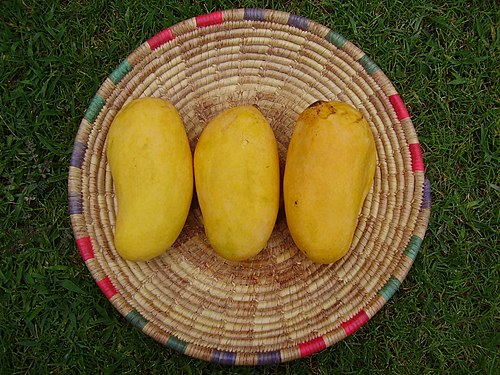Mirpur Khas District ضلع میرپور خاص ميرپور خاص ضلعو | |
|---|---|
 Location of Mirpurkhas in Sindh province | |
| Coordinates:25°33′02″N069°00′11″E / 25.55056°N 69.00306°E /25.55056; 69.00306 | |
| Country |  Pakistan Pakistan |
| Province |  Sindh Sindh |
| Division | Mirpur Khas |
| Established | 31 October 1990; 34 years ago (31 October 1990) |
| Headquarters | Mirpur Khas |
| Administrative Towns | 07
|
| Government | |
| • Type | District Administration |
| • Deputy Commissioner | Dr Rasheed Masud Khan |
| • Constituensy | NA-211 Mirpur Khas-I NA-212 Mirpur Khas-II |
| Area | |
• District | 2,925 km2 (1,129 sq mi) |
| Elevation | 17 m (56 ft) |
| Population | |
• District | 1,681,386 |
| • Density | 574.8/km2 (1,489/sq mi) |
| • Urban | 492,175 |
| • Rural | 1,189,211 |
| Literacy | |
| • Literacy rate |
|
| Time zone | UTC+05:00 (PKT) |
| • Summer (DST) | DSTis not observed |
| ZIP Code | |
| NWD (area) code | 233 |
| ISO 3166 code | PK-SD |
Mirpur Khas District (Sindhi:ضلعو ميرپورخاص,Urdu:ضلع مِيرپورخاص) is one of the districts ofMirpur Khas Division in the province ofSindh,Pakistan. Its capital isMirpur Khas city.[3] District Mirpur Khas became district by separating fromTharparkar District on 31 October 1990. According to2023 Pakistani census population of Mirpur Khas district is 1,680,980 (1.68 million).
The district of Mirpur Khas is sub-divided into 7 tehsils:[4]

After the capture of Sindh by theBritish, In 1882 they createdThar and Parkar District in SoutheasternSindh for administrative purposes. In 1906, the district headquarters was moved fromAmarkot (nowUmerkot) toMirpur Khas. In 1953, after the creation ofPakistan, some area on the northern side was detached from the originalTharparkar District and namedSanghar District. On 31 October 1990 the district was divided into theTharparkar and Mirpur Khas Districts. In the same year, Mirpur Khas also get the status of divisional headquarter.
Mirpur Khas District derives its name from the town ofMirpur Khas, founded byMir Ali Murad Talpur in 1806.
| Year | Pop. | ±% p.a. |
|---|---|---|
| 1951 | — | |
| 1961 | — | |
| 1972 | — | |
| 1981 | — | |
| 1998 | 1,006,329 | — |
| 2017 | 1,504,440 | +2.14% |
| 2023 | 1,681,386 | +1.87% |
| Sources:[6] | ||
As of the2023 census, Mirpur Khas district has 312,986 households and a population of 1,681,386.[7] The district has a sex ratio of 110.36 males to 100 females and a literacy rate of 45.37%: 55.04% for males and 34.75% for females.[1][8] 537,553 (31.98% of the surveyed population) are under 10 years of age.[9] 492,175 (29.27%) live in urban areas.[1]
| Religions in Mirpur Khas district (2023)[10] | ||||
|---|---|---|---|---|
| Religion | Percent | |||
| Islam | 57.99% | |||
| Hinduism | 41.48% | |||
| Christianity | 0.42% | |||
| Other or not stated | 0.11% | |||
| Religious group | 1941[11]: 54–57 [a] | 2017[12] | 2023[10] | |||
|---|---|---|---|---|---|---|
| Pop. | % | Pop. | % | Pop. | % | |
Islam | 93,405 | 49.24% | 913,979 | 60.75% | 974,734 | 57.99% |
Hinduism | 91,263 | 48.11% | 582,879 | 38.74% | 697,318 | 41.48% |
Sikhism | 4,502 | 2.37% | — | — | 35 | ~0% |
Christianity | 125 | 0.07% | 5,734 | 0.38% | 7,082 | 0.42% |
| Ahmadi | — | — | 1,769 | 0.12% | 1,286 | 0.08% |
| Others[b] | 403 | 0.21% | 79 | 0.01% | 525 | 0.03% |
| Total Population | 189,698 | 100% | 1,504,440 | 100% | 1,680,980 | 100% |
The majority religion is Islam, with 57.99% of the population. Hinduism (including those from Scheduled Castes) is practiced by 41.48% of the population. In rural areas, Muslims and Hindus are in nearly equal numbers.[10]
| Circle | Muslims | Hindus | Others |
|---|---|---|---|
| Digri | 57.4% | 42.36% | 0.24% |
| Hussain Bux Mari | 55.17% | 44.26% | 0.57% |
| Jhudo | 55.02% | 44.58% | 0.40% |
| Kot Ghulam Muhammad | 40.53% | 59.32% | 0.15% |
| Mirpur Khas | 90.38% | 8.05% | 1.57% |
| Shujabad | 49.11% | 50.24% | 0.65% |
| Sindhri | 54.33% | 45.58% | 0.09% |
At the time of the 2023 census, 73.7% of the population spokeSindhi, 11.93%Urdu, 6.27%Punjabi, 1.65%Balochi and 6.65% Others various tongues as their first language.[13]